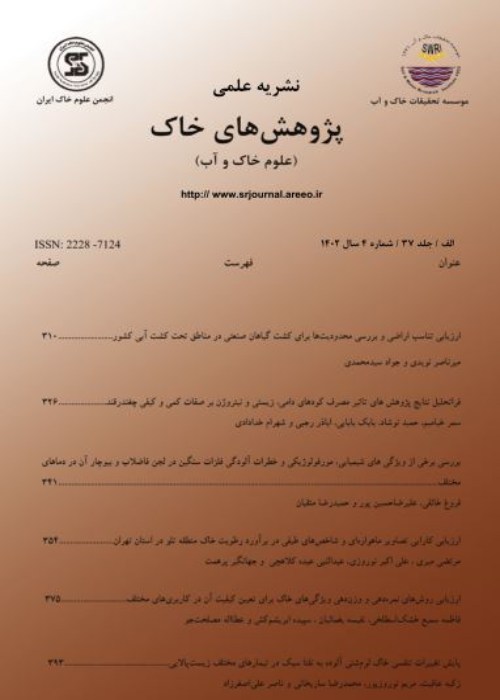Application of Fuzzy Logic to Some Imprecise Data of Rainfall Erosivity and Its Spatial Variability in Caspian Sea Watershed
Author(s):
Abstract:
Rainfall erosivity (EI30) of the Universal Soil Loss Equation is one of the major factors in soil erosion and sediment yield models. Measurement of this factor is costly and time consuming. Therefore، empirical relationships based on rainfall intensity are used. In many places، however، access to rainfall intensity is limited and rainfall erosivity is estimated by rainfall amount، causing uncertainty in the results. In this research، fuzzy logic was applied to some imprecise data of rainfall erosivity and its spatial variability was evaluated by ordinary kriging، cokriging، spline، local polynomial، global polynomial and inverse distance weighting methods. Among the available parameters or indices of 11 synoptic stations، only Modified Fournier index (AWT IMAGE) showed a significant correlation with EI30 (r2=0. 762، P<0. 001). Therefore، a regression model was developed for estimating EI30 from FImod in 66 rain gauge stations. Also، the Mamdani inference system and five Gaussian membership functions، were used to investigate the fuzzy interpolation method for elevation as the input and rainfall erosivity as the output variables. The fuzzified sets were transformed to certain data. The nugget to sill ratio (0. 23) showed strong spatial correlation in a distant of 630 km of EI30. The negative values of the mean bias error in the fuzzy kriging and fuzzy cokriging methods indicated an underestimation of EI30 values، while its positive values in the other methods demonstrated an overestimation of EI30. The Mean Absolute Error (MAE) of the Fuzzy Cokriging method declined by 28%، 21%، 19%، 22%، 15%، and 11 percent، when compared to that of، respectively، the IDW، kriging، cokriging، spline and fuzzy IDW، fuzzy kriging، and fuzzy spline methods in the study area. The output maps for all of the interpolation methods followed similar decreasing trends in west to east direction of the watershed. The highest value of rainfall erosivity index (1450 MJ mm ha-1 h-1 y-1) was found in the west of the study area. This pattern is similar to the pattern of climatic change from humid to semiarid
Keywords:
Language:
Persian
Published:
Iranian Journal of Soil Research, Volume:27 Issue: 3, 2013
Pages:
397 to 404
magiran.com/p1216662
دانلود و مطالعه متن این مقاله با یکی از روشهای زیر امکان پذیر است:
اشتراک شخصی
با عضویت و پرداخت آنلاین حق اشتراک یکساله به مبلغ 1,390,000ريال میتوانید 70 عنوان مطلب دانلود کنید!
اشتراک سازمانی
به کتابخانه دانشگاه یا محل کار خود پیشنهاد کنید تا اشتراک سازمانی این پایگاه را برای دسترسی نامحدود همه کاربران به متن مطالب تهیه نمایند!
توجه!
- حق عضویت دریافتی صرف حمایت از نشریات عضو و نگهداری، تکمیل و توسعه مگیران میشود.
- پرداخت حق اشتراک و دانلود مقالات اجازه بازنشر آن در سایر رسانههای چاپی و دیجیتال را به کاربر نمیدهد.
In order to view content subscription is required
Personal subscription
Subscribe magiran.com for 70 € euros via PayPal and download 70 articles during a year.
Organization subscription
Please contact us to subscribe your university or library for unlimited access!


